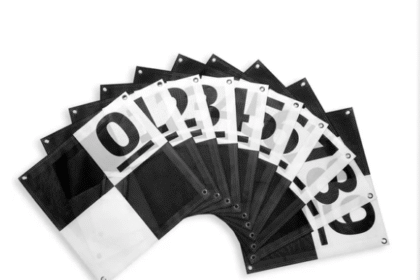Drywall painting is a crucial phase in any home renovation or construction project. While it may seem like a simple task of rolling on some paint, achieving a flawless and long-lasting finish requires skill, preparation, and attention to detail. From preparing the surface to choosing the right tools and products, homeowners who understand the drywall painting process are more likely to enjoy professional-quality results.
Whether you’re refreshing a living room, finishing a basement, or painting a newly built home, the right approach to drywall painting ensures both durability and beauty. Experienced professionals like Wise Properties emphasize that skipping essential steps can lead to subpar finishes, paint failure, and costly do-overs.
Why Proper Drywall Painting Matters
Painting over drywall without adequate preparation can lead to blotchy finishes, poor adhesion, and visible imperfections. Drywall is a porous surface made of gypsum core and paper facing. It absorbs paint unevenly unless treated properly, and minor flaws can become glaring under light.
Proper drywall painting techniques not only enhance visual appeal but also seal the surface against moisture, dirt, and wear. High-quality results protect your investment, extend repainting cycles, and boost overall indoor aesthetics.
Preparing Drywall for Paint
Before you even think about dipping a brush into paint, surface preparation is key. Most failures in drywall paint stem from inadequate prep. This includes cleaning, repairing, sanding, and priming.
Step 1: Inspect and Repair the Drywall
Look for dents, holes, seams, or cracks. Apply joint compound (often called mud) to fill in imperfections. Let it dry completely before sanding the area smooth with fine-grit sandpaper. Repeat the process as necessary for a uniform surface.
Step 2: Remove Dust and Debris
After sanding, thoroughly wipe down the entire wall to remove drywall dust. Use a dry microfiber cloth or lightly damp sponge. Even a small amount of residual dust can prevent paint or primer from bonding properly.
Step 3: Prime the Surface
Applying a primer is essential. Drywall primers are specifically formulated to seal the porous surface and provide a consistent base for paint. A latex-based primer is a great option for most interior jobs. Skipping primer can result in uneven absorption and flashing (shiny or dull patches).
Choosing the Right Paint and Tools
Not all paints or tools are equal. For optimal results, select quality products that suit the purpose and environment of the room.
Paint Type
- Latex paint is recommended for interior walls. It dries quickly, has low odor, and is easy to clean up.
- Use flat or matte finishes for ceilings and low-traffic areas, while eggshell or satin finishes work well for living rooms and bedrooms.
- Semi-gloss or gloss finishes are ideal for high-moisture areas like kitchens and bathrooms due to their durability and wipeability.
Brushes, Rollers, and Sprayers
- Use angled brushes for edges and corners.
- 3/8″ to 1/2″ nap rollers are best for smooth drywall surfaces.
- For larger jobs, an airless sprayer can provide a smooth, even coat—but requires skill and masking precision.
The Painting Process Step-by-Step
Even with perfect preparation and the right tools, following a proper process is essential for excellent results.
Cut-In the Edges
Start by “cutting in” the edges with a brush—around ceilings, corners, and trim. This establishes a clean line and helps prevent roller overspray.
Apply the First Coat
Load your roller evenly, then apply paint using a “W” or “M” motion. This technique distributes paint more evenly across the wall. Work in sections and maintain a wet edge to avoid visible roller lines.
Let It Dry Completely
Allow the first coat to dry thoroughly as per manufacturer instructions—usually 2 to 4 hours. Rushing this step can cause the second coat to lift the first, creating uneven coverage.
Apply the Second Coat
The second coat builds color depth and ensures complete coverage. Repeat the same rolling technique, and again, allow ample drying time before replacing wall hangings or furniture.
Common Drywall Painting Mistakes to Avoid
Even experienced DIYers can make errors that impact the final look. Here are a few common pitfalls and how to avoid them:
- Skipping primer: Leads to blotchy finishes and uneven absorption
- Painting dusty walls: Prevents proper adhesion
- Overloading the roller: Causes drips and streaks
- Not sanding between coats: Leaves rough textures or debris
- Rushing between coats: Results in poor coverage and visible lines
Taking your time with each step will save frustration and money in the long run.
When to Repaint Drywall Surfaces
Interior walls don’t face the same wear and tear as exteriors, but they still need maintenance. Most interior surfaces should be repainted every 5 to 7 years, depending on usage and exposure.
High-traffic areas like hallways, kids’ rooms, and kitchens may need more frequent attention due to scuffs, fingerprints, and general wear. Regular cleaning and touch-ups can prolong intervals between full repaints.
When to Call in the Professionals
If your drywall painting project involves large areas, vaulted ceilings, intricate trim, or serious wall damage, it’s worth hiring professionals. A skilled team ensures proper surface prep, seamless application, and longer-lasting finishes.
Companies like Wise Properties bring years of experience, specialized tools, and product knowledge that go far beyond what most homeowners can accomplish on their own. For stress-free results and guaranteed quality, hiring experts is often the best decision.
Conclusion
Drywall painting is more than just a finishing touch—it’s a key component in protecting, beautifying, and enhancing your home’s interior. From thorough surface preparation to choosing the right materials and applying paint correctly, every step impacts the final result.
By following expert-backed methods and avoiding common mistakes, homeowners can achieve crisp, professional results that last. And when the job demands a flawless outcome or exceeds your comfort zone, don’t hesitate to contact seasoned professionals like Wise Properties, who can transform any space with precision and care.
Whether you’re refreshing a single room or painting an entire home, this guide ensures you approach drywall painting with confidence, skill, and knowledge.
FAQs
Do I always need to prime drywall before painting?
Yes, priming is essential for new drywall and highly recommended for repaired areas. It seals the surface and promotes even paint absorption.
Can I use leftover paint from other rooms on new drywall?
Only if it’s the same type (latex vs. oil) and quality. However, always ensure full coverage by checking the patient’s consistency and age.
What’s the best finish for drywall in a living room?
An eggshell or satin finish works well. It offers a balance of smooth appearance and washability.
How long should I wait before applying the second coat?
Follow the paint manufacturer’s instructions, typically 2–4 hours between coats.
Should I use a sprayer or roller for drywall painting?
Rollers are great for DIY and small rooms. Sprayers can offer a smoother finish but require skill and preparation.



